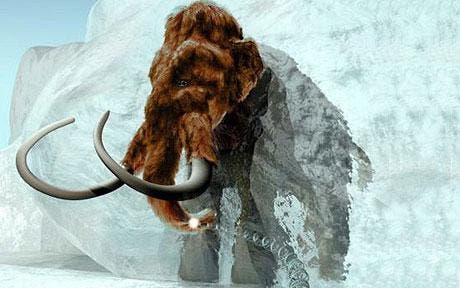
A group of wildlife conservationists has proposed listing wooly mammoths under the Convention on International Trade in Endangered Species of Wild Fauna and Flora (CITES) which offers varying degrees of protection for 35,000 species. The problem is the mammoths have been extinct for the last 4,000 years. As paradoxical as listing an extinct species among endangered ones might sound, the proposal is not only sensical but much overdue as mammoth tusks are used to ‘launder’ elephant sourced ivory.
Smugging elephant ivory disguised as mammoth
Though the last mammoth died thousands of years ago, many remains are very well preserved — most under the frozen tundras in Russia. Driven by climate change, the once icy tundras of Siberia are now thawing exposing many mammoths and given rise to a burgeoning mammoth tusk trade. It’s estimated 100 tons of mammoth tusk leave Russia every year, and the trade is growing fast.
At first, no one seemed to have an issue with this. Moreover, some relished at the news because they thought the mammoth ivory would offset some of the demand for illegal elephant ivory sourced from poachers acting in Africa.
In reality, mammoth ivory trade is now being used as a front to smuggle illegal ivory across borders. Because the two look very similar, traders shamelessly ship elephant ivory, which is protected by the 1989 CITES treaty, as mammoth ivory, which isn’t protected or restricted by any kind of treaty. No proof of source or documentation is needed what so ever to trade and transport mammoth ivory. Sometimes, containers full with elephant ivory would be disguised under a superficial top layer of mammoth tusks, to fool even those trained to recognize the kinds of ivory. Some smugglers have gone as far as painting elephant tusks so they retain a more mammoth-like, darker colour.
Iris Ho, wildlife program manager at Humane Society International, is one of those leading the charge to list mammoth ivory under CITES. The truth is, we’re dealing with a loophole and it needs to be clogged fast. Only last week, ZME Science reported how elephant populations have plummeted by 30 percent since 2007.
“The problem is that mammoth ivory gets confused with ivory from endangered elephants. This is the first long-extinct animal considered for a restriction in trade. We have to work out how we might legally do this,” Ho said in a statement released to the press.
This month, in Johannesburg, a CITES meeting will be held and among the leading issues to be discussed there will also be the ivory laundering business and how to legally restrict mammoth ivory trade.






